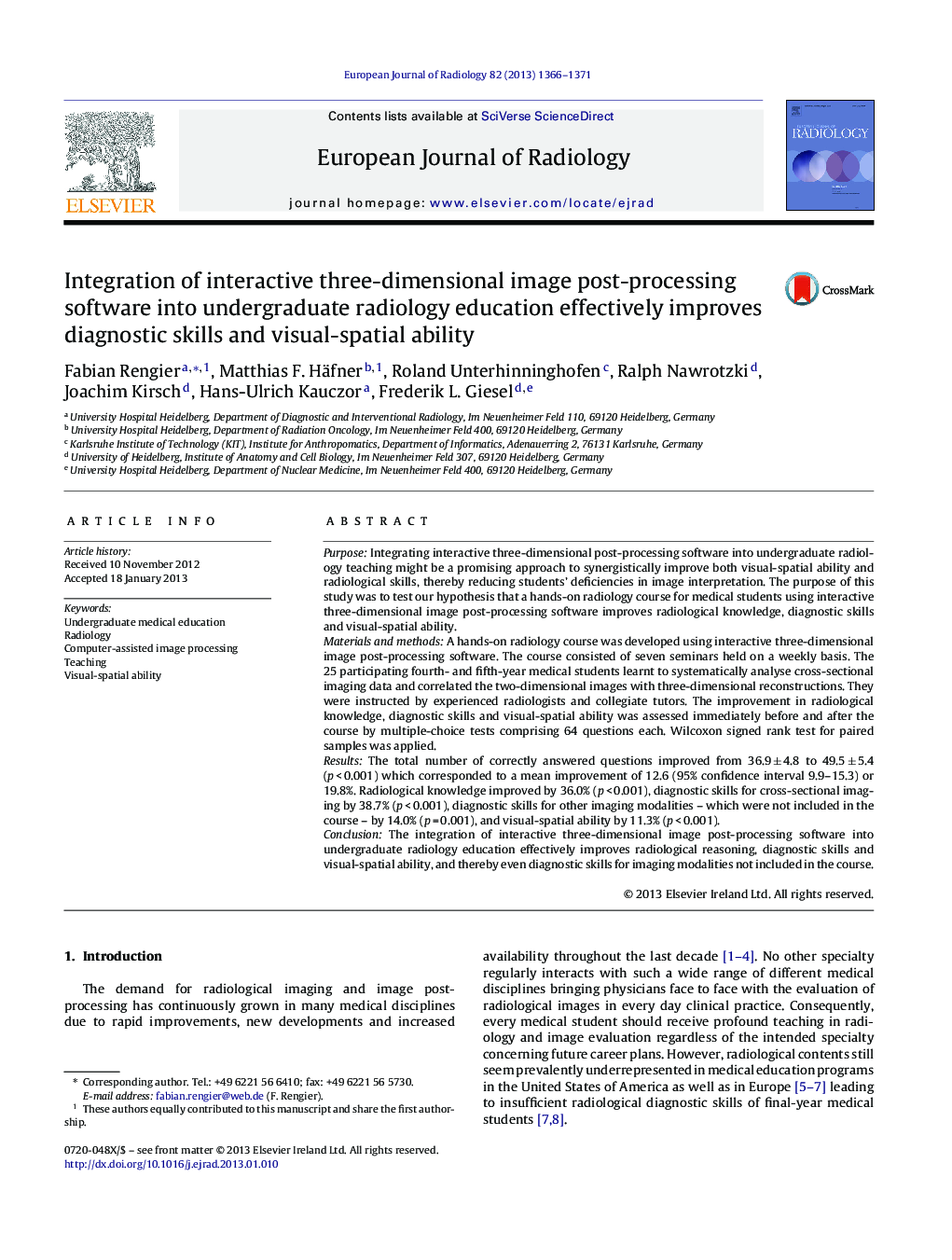| کد مقاله | کد نشریه | سال انتشار | مقاله انگلیسی | نسخه تمام متن |
|---|---|---|---|---|
| 6244678 | 1609775 | 2013 | 6 صفحه PDF | دانلود رایگان |
PurposeIntegrating interactive three-dimensional post-processing software into undergraduate radiology teaching might be a promising approach to synergistically improve both visual-spatial ability and radiological skills, thereby reducing students' deficiencies in image interpretation. The purpose of this study was to test our hypothesis that a hands-on radiology course for medical students using interactive three-dimensional image post-processing software improves radiological knowledge, diagnostic skills and visual-spatial ability.Materials and methodsA hands-on radiology course was developed using interactive three-dimensional image post-processing software. The course consisted of seven seminars held on a weekly basis. The 25 participating fourth- and fifth-year medical students learnt to systematically analyse cross-sectional imaging data and correlated the two-dimensional images with three-dimensional reconstructions. They were instructed by experienced radiologists and collegiate tutors. The improvement in radiological knowledge, diagnostic skills and visual-spatial ability was assessed immediately before and after the course by multiple-choice tests comprising 64 questions each. Wilcoxon signed rank test for paired samples was applied.ResultsThe total number of correctly answered questions improved from 36.9 ± 4.8 to 49.5 ± 5.4 (p < 0.001) which corresponded to a mean improvement of 12.6 (95% confidence interval 9.9-15.3) or 19.8%. Radiological knowledge improved by 36.0% (p < 0.001), diagnostic skills for cross-sectional imaging by 38.7% (p < 0.001), diagnostic skills for other imaging modalities - which were not included in the course - by 14.0% (p = 0.001), and visual-spatial ability by 11.3% (p < 0.001).ConclusionThe integration of interactive three-dimensional image post-processing software into undergraduate radiology education effectively improves radiological reasoning, diagnostic skills and visual-spatial ability, and thereby even diagnostic skills for imaging modalities not included in the course.
Journal: European Journal of Radiology - Volume 82, Issue 8, August 2013, Pages 1366-1371
